eBook 2: Chapter 2
Project Management Phase for Business Continuity Management Planning Methodology for Kinderland
Introduction
The Project Management (PM) phase is the cornerstone of the Business Continuity Management (BCM) planning methodology.
This phase ensures that the entire BCM process for Kinderland Singapore is strategically aligned, well-coordinated, and systematically executed.
During this phase, the foundation for all subsequent BCM activities is laid, and a structured framework for managing the project is established.
Effective project management is critical to the success of Kinderland's BCM program, as it facilitates stakeholder engagement, resource allocation, and the setting of realistic timelines and objectives.
In this chapter, we will explore the essential steps of the Project Management phase, discuss key roles and responsibilities, and provide examples relevant to Kinderland's unique context.
The ultimate aim is to establish a clear plan for embedding business continuity within Kinderland’s operations while complying with ISO22301 standards.
Key Components of the Project Management Phase
-
Defining the BCM Project Scope and Objectives
The first step in the Project Management phase is to clearly define the scope and objectives of the BCM program.For Kinderland, this means identifying which business functions and processes are critical for its day-to-day operations.
Examples of critical functions at Kinderland include its early childhood education programs, administration of student records, and financial operations such as fee collection and payroll processing.
The objectives of the BCM program for Kinderland would include:
-
Ensuring continuity of educational services, especially during crises that could disrupt daily operations.
-
Protecting the safety and well-being of children, staff, and parents in the event of a disruption.
-
Minimising downtime for administrative and operational functions.
By clearly establishing these objectives, Kinderland can focus its efforts on the most critical areas and ensure that all stakeholders understand the importance of the BCM program.
-
Engagement and Leadership
Strong leadership and commitment are vital during the Project Management phase. Kinderland's senior management, including the CEO and Board of Directors, must be engaged early to champion the BCM initiative.At this stage, an executive sponsor should be appointed to oversee the BCM program, ensuring that it receives the necessary resources, budget, and attention.
For example, at Kinderland, the CEO may designate a senior manager from the Operations or Risk Management team as the BCM Project Manager.
This individual would be responsible for coordinating efforts across departments, ensuring timelines are met, and addressing any challenges that arise during the implementation process.
-
Resource Allocation and Budgeting
A critical task in the Project Management phase is securing the necessary resources. For Kinderland, this could include budgeting for technology solutions, such as backup data systems or cloud-based platforms, and investing in training programs for staff.Additional resources may be required for continuity testing and for acquiring external expertise in risk management and crisis communications.
Allocating the right resources and ensuring they are available when needed is essential for the BCM program’s success.
For example, in case of a fire or natural disaster at one of Kinderland's locations, a budget might be allocated to secure temporary classrooms and establish communication protocols with parents.
-
Timeline and Milestones
Establishing a realistic timeline is crucial for ensuring that the BCM planning process stays on track. For Kinderland, the timeline should be broken down into manageable phases, with clear milestones for each step.This timeline will align with the various BCM phases—Risk Analysis, Business Impact Analysis, Strategy Development, Plan Creation, and Testing. Each milestone should include deadlines for achieving specific deliverables.
For example, one key milestone could be the completion of the Business Impact Analysis (BIA) phase, which would help determine the criticality of various operations at Kinderland. Another milestone could be the development and review of the Business Continuity Strategy (BCS).
-
Stakeholder Communication and Engagement
Effective communication is essential throughout the Project Management phase. It is important for all stakeholders at Kinderland, from staff to parents, to be aware of the BCM program’s goals and progress.Regular updates, meetings, and workshops will ensure that everyone involved understands their roles and responsibilities.
For example, Kinderland could set up a monthly project update meeting, where team members from different departments discuss the progress of the BCM implementation and share challenges they are facing.
Additionally, newsletters or informational sessions could be held for parents, informing them about the school’s preparedness for crises.
Conclusion
The Project Management phase serves as the foundation for a successful Business Continuity Management (BCM) program at Kinderland.
By defining the scope, engaging leadership, allocating resources, establishing a clear timeline, and ensuring consistent communication, Kinderland will create a structured and effective approach to continuity planning.
Through this phase, all stakeholders will align on the shared goal of safeguarding the continuity of Kinderland’s critical services—ensuring that the organisation is prepared for any potential disruptions, from natural disasters to public health crises.
By embedding the principles of ISO22301 from the outset, Kinderland will not only meet regulatory requirements but also ensure the long-term resilience of its operations, providing peace of mind to families, staff, and the wider community.
Building a Resilient Kinderland: A Practical Guide to Business Continuity Management |
||||
| eBook 2: Implementing Business Continuity Management for the Kinderland Singapore |
||||
| C1 | C2 | C3 | C4 | C5 |
| C6 | C7 | C8 | C9 | C10 |





![Banner [Summary] [BCM] [E2] [C2] Project Management](https://no-cache.hubspot.com/cta/default/3893111/a27bdcb3-7e9b-40ec-8a47-a1c06d8688ca.png)


![Register [BL-B-3]*](https://no-cache.hubspot.com/cta/default/3893111/ac6cf073-4cdd-4541-91ed-889f731d5076.png)



![FAQ [BL-B-3]](https://no-cache.hubspot.com/cta/default/3893111/b3824ba1-7aa1-4eb6-bef8-94f57121c5ae.png)
![Email to Sales Team [BCM Institute]](https://no-cache.hubspot.com/cta/default/3893111/3c53daeb-2836-4843-b0e0-645baee2ab9e.png)





